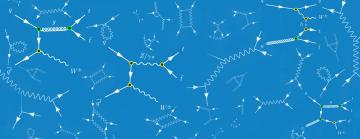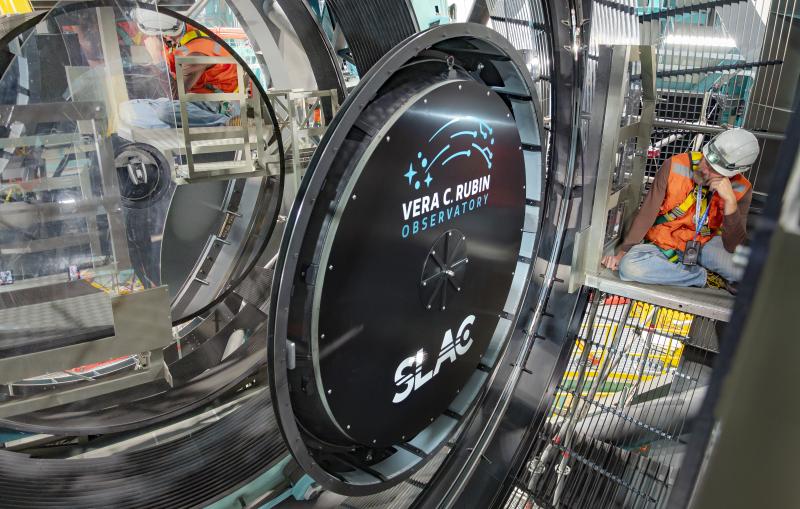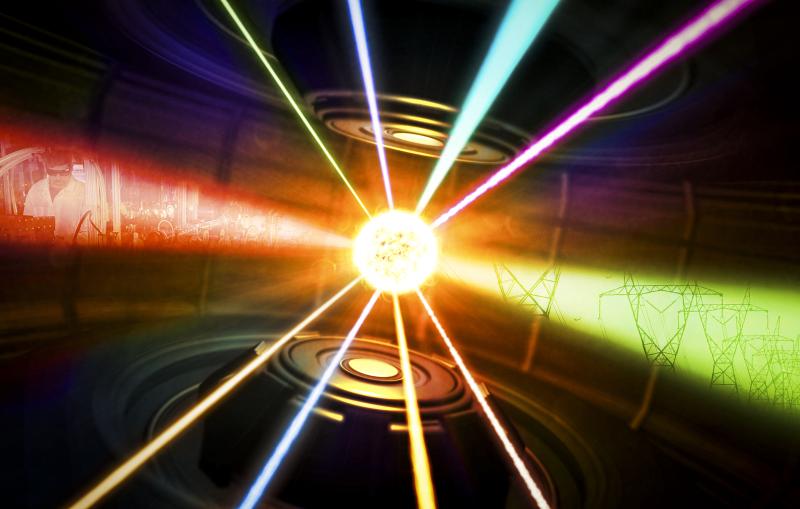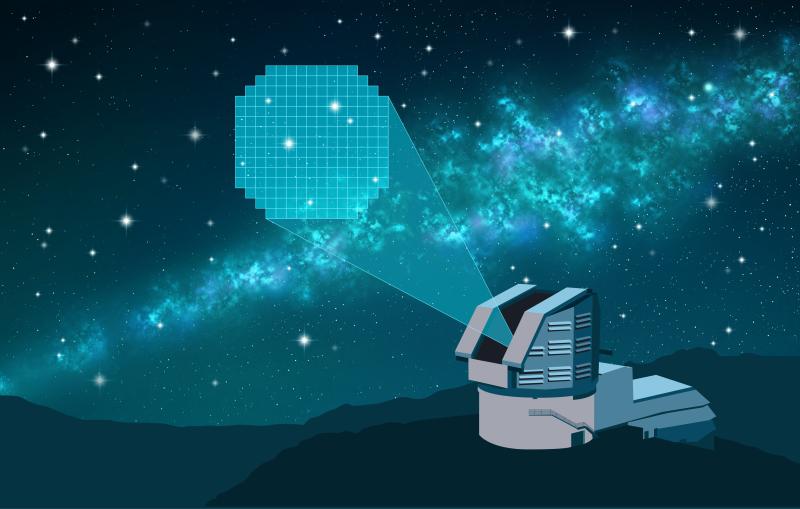Particle trio exceeds expectations at LHC
The ATLAS experiment measured more than expected of a trio of particles in the aftermath of proton collisions. The results will refine physicists’ understanding of our universe at the subatomic level.
By Chris Patrick
The ATLAS experiment has confirmed that a trio of particles – a top-antitop quark pair and a W boson –occurs more frequently than expected in the wake of proton-proton collisions inside the Large Hadron Collider (LHC).
The process that creates these three particles post impact is quite rare: Only one out of every 50,000 collisions at the LHC produces the trio, known as ttW. After popping into existence, top quarks and W bosons are short lived and decay almost immediately, so the team identified ttW events based on the electrons and muons they decay into.
Members of the ATLAS group at the Department of Energy's SLAC National Accelerator Laboratory have spent the last three years completing a complex analysis to measure the process, including developing novel methods to estimate and remove background and detector effects to maximize the accuracy and detail of the analysis of the measurement. The results will help researchers better test theories of elementary particle physics as well as help experimentalists studying other particle physics processes.
“The only measurements of ttW production come from the LHC – it is the first collider that can produce these types of events at a large enough rate to be measured,” said Brendon Bullard, research associate at SLAC National Accelerator Laboratory and leader of this data analysis.
A puzzling excess
ATLAS first observed the ttW process in 2015 using data collected during the LHC’s Run 1, which took place between 2010 and 2012. Subsequent measurements using a subset of data collected during Run 2 (2015-2018) suggested that ttW was cropping up more than predicted by the Standard Model of particle physics, which physicists use to describe the behavior of subatomic particles.
The most recent measurement using the full dataset collected by ATLAS during Run 2 has led to a more precise measurement of ttW, finding the total production rate to be about 20 percent higher than theoretical predictions. Fresh results from the CMS experiment corroborate this excess.
“It’s still unclear what exactly could be causing this discrepancy, but these results really do seem to indicate that there’s something going on that we’re not taking into account,” Bullard said.
It’s possible that new physics beyond the Standard Model is responsible.
Alternatively, it’s possible that the models used today lack necessary elements to correctly predict ttW production. Theorists make predictions from the Standard Model through piecewise approximations of increasing difficulty, and subtle effects that have not yet been incorporated into these approximations may be able to explain the discrepancy.
Either way, theorists must now try to figure out the truth by taking these yet-to-be-calculated subtle effects into account as they approximate ttW.
“This is something that hasn't been done before because it's very hard. But now, with our result, there's already theorists who are interested in putting in the effort,” Bullard said. “This measurement will be very useful to continue to better understand the Standard Model and maybe even identify some beyond-the-Standard-Model effects if we're lucky.”
Too much can be a good thing
In addition to helping refine the Standard Model, studying different attributes of ttW events provides a new way for scientists to probe fundamental forces that are at play between the two quarks and W boson, including the strong interaction, which binds quarks together, and electroweak interaction, which governs electromagnetism and radioactive decay.
Better measurements will also aid in the study of even rarer processes occurring during proton collisions. ttW is a major background of two other processes observed at the LHC, and previously, physicists detecting these processes had to estimate ttW production and subtract it from data to find the signal they were after. Now they can use this more precise measurement of ttW to more accurately identify these rare signals.
One of these processes is the production of two top quarks and a Higgs boson, the particle that gives mass to certain particles, including quarks and W bosons. This event, known as ttH, is 10 times rarer than ttW when looking for the electrons and muons it decays into. Better measurements of ttH will help physicists measure how strongly the Higgs couples with the top quark, a key test of the Standard Model that can shed light on the origin of mass.
The other process ttW muddles is the production of four top quarks, an event that is 50 times rarer and which ATLAS and CMS recently observed for the first time. Further examination will allow physicists to probe new physics that might involve top quarks, the most massive particle in the Standard Model.
“Improved understanding of the ttW process, especially with this result, can further improve the four top measurements and precision, allowing us to explore more properties of this process,” said Zhi Zheng, research associate at SLAC who oversaw the four top quark analysis at ATLAS. She also helped Bullard with the ttW analysis. Working together at SLAC helped the pair crosscheck these linked measurements.
“Being at SLAC together has allowed a greater connection and collaboration between these two measurements,” Bullard said.
About SLAC
SLAC National Accelerator Laboratory explores how the universe works at the biggest, smallest and fastest scales and invents powerful tools used by researchers around the globe. As world leaders in ultrafast science and bold explorers of the physics of the universe, we forge new ground in understanding our origins and building a healthier and more sustainable future. Our discovery and innovation help develop new materials and chemical processes and open unprecedented views of the cosmos and life’s most delicate machinery. Building on more than 60 years of visionary research, we help shape the future by advancing areas such as quantum technology, scientific computing and the development of next-generation accelerators.
SLAC is operated by Stanford University for the U.S. Department of Energy’s Office of Science. The Office of Science is the single largest supporter of basic research in the physical sciences in the United States and is working to address some of the most pressing challenges of our time.






